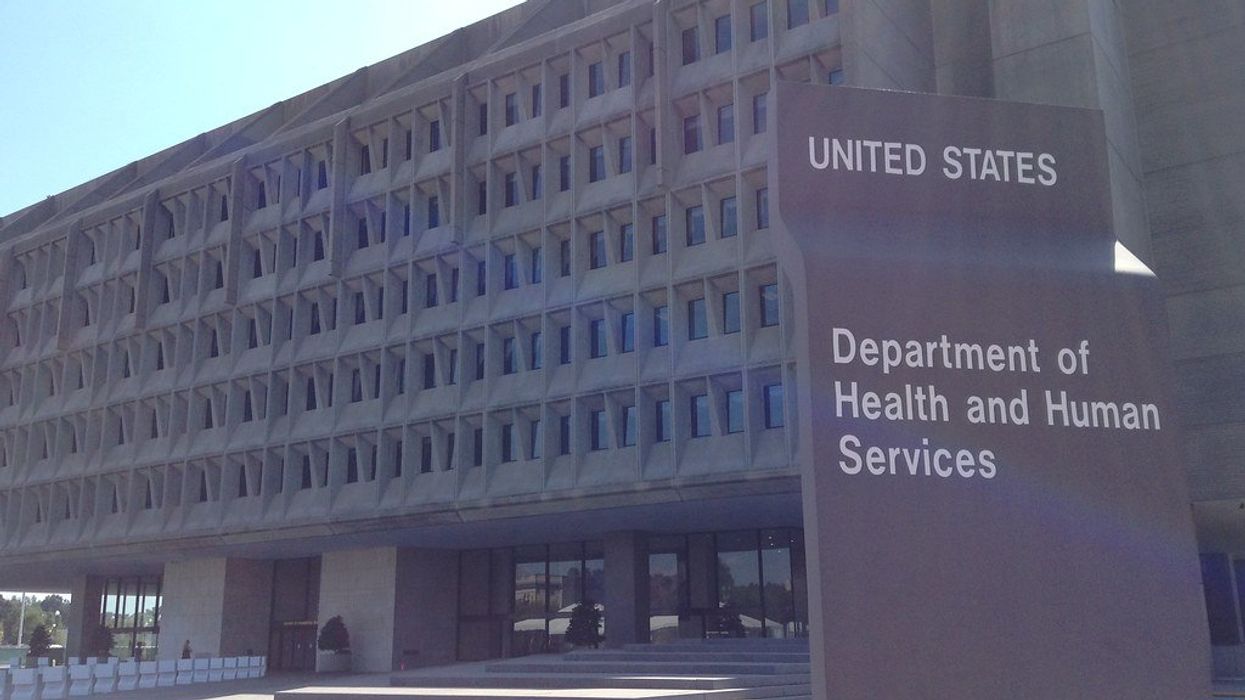Schmidt is a columnist and editorial board member with the St. Louis Post-Dispatch. She worked as a registered nurse and case manager for more than 20 years before switching careers.
This is part of a series offering a nonpartisan counter to Project 2025, a conservative guideline to reforming government and policymaking during the first 180 days of a second Trump administration. The Fulcrum's cross partisan analysis of Project 2025 relies on unbiased critical thinking, reexamines outdated assumptions, and uses reason, scientific evidence, and data in analyzing and critiquing Project 2025.
Project 2025, the Heritage Foundation’s recommendations for policy and personnel management under a conservative president, covers dozens of Cabinet offices and federal agencies. But its proposals for the Department of Health and Human Services could impact the lives of more Americans than any other set of recommendations in the 900-page report.
Jumping right into racial issues
The first two paragraphs of the chapter immediately serve up a racial dog whistle — characteristic of the entire section. The first paragraph states without any evidence:
“Under President Biden, the mission has shifted to ‘promoting equity in everything we do’ for the sake of ‘populations sharing a particular characteristic’ including race, sexuality, gender identification, ethnicity, and a host of other categories.”
In the very next paragraph, the report goes on to conclude that “as result of HHS having lost its way, U.S. life expectancy, instead of returning to normal after the COVID-19 pandemic, continued to drop precipitously to levels not seen since 1996 with white populations alone losing 7 percent of their expected life span in just one year.Nothing less than America’s long-term survival is at stake.” Therefore, the author argues, HHS must focus on the health of Americans rather than “using social engineering that leaves us sicker, poorer, and more divided.”
Why they are concerned only about the white population losing 7 percent of its expected life expectancy speaks to much of this section.
A heavy focus on abortion
Almost a quarter of the 54-page chapter prioritizes pro-life policies and a pro-life agenda, which of course, is a conservative administration’s prerogative. It is also not unreasonable for such an administration to represent the 41 percent of Americans who responded to a May 2024 Gallup poll indicating they consider themselves pro-life. However, the relationship of a pro-life agenda to a report on HHS is dubious at best.
Project 2025 claims, “The undeniable reality of abortion is that it does not always result in a dead baby, and these born-alive babies are left to die. HHS should … investigate instances of infants born alive and left untreated in covered hospitals.”
The author also suggests that “Congress should pass the ‘Born-Alive Abortion Survivors Protection Act’ to require that proper medical care be given to infants who survive an abortion and to establish criminal consequences for practitioners who fail to provide such care.”
While the author alleges “the undeniable reality” that there are babies born alive and “left to die,” they cite no supporting data for this allegation.
Rewriting Medicare and Medicaid
There are small sections, which might be easily overlooked, that would change Medicare in substantial ways. Project 2025 recommends making Medicare Advantage the default enrollment option for all Medicare recipients.
There are distinct disadvantages to Medicare Advantage plans over traditional Medicare, which seniors are accustomed to. The cons include restrictive networks, which may not include patients’ preferred doctors, high out-of-pocket costs, prior authorization requirements, plans that change each year, and limits on prescription coverage.
The project recommends repealing the “harmful health policies enacted under the Obama and Biden Administrations such as the Medicare Shared Savings Program and Inflation Reduction Act,” including the drug price negotiation program for Medicare Part D, with the assumption that the free market can provide better health care for Americans. But rather than assuming less government is always better, a stronger approach would involve thorough analysis of the pluses and minuses of the Medicare Shared Savings Program and Inflation Reduction Act, and then adjust based on cost benefit analysis rather than political dogma.
Some recommendations for “improving” Medicaid do follow that path, including enhancing eligibility standards, which would hold states accountable for improper eligibility determinations. Additionally, the recommendation that the Centers for Medicare & Medicaid Services add a work requirement as well as requiring Medicaid recipients to contribute to their health care costs “at a level that is appropriate to protect the taxpayer” might be worthy of consideration as long as the end result is equitable.
The airing of grievances
As with many other chapters in Project 2025, there is an abundance of airing of grievances. It calls the Centers for Disease Control and Prevention “the most incompetent and arrogant agency in the federal government.” It attacks the National Institutes of Health for its focus on the #MeToo movement and its “woke policies,” the Food and Drug Administration for its “failed early COVID-19 testing experience,” the HHS secretary and the Office of the Secretary “for colluding with Big Tech to censor dissenting opinions during COVID,” and “Big Pharma.”
The report also declares “unaccountable bureaucrats like Anthony Fauci should never again have such broad, unchecked power to issue health ‘guidelines’ that will certainly be the basis for federal and state mandates.” The author does not properly credential Dr. Anthony Fauci, underscoring the anti-expert and populist view of the right.
The HHS recommendations, which would have profound consequences for the American public if implemented, are deeply problematic. Somehow, it manages to bring education, abortion and race together in paragraph that lacks any context:
“The OCR (Office of Civil Rights) should highlight its 2019 investigation and voluntary resolution agreement with Michigan State University based on the sexual abuse of gymnasts by Larry Nassar. OCR should also coordinate with the Department of Education on a public education and civil rights enforcement campaign to ensure that female college athletes who become pregnant are no longer pressured to obtain abortions; pursue race discrimination claims against entities that adopt or impose racially discriminatory policies such as those based on critical race theory; and announce its intention to enforce disability rights laws to protect children born prematurely, children with disabilities, and children born alive after abortions.”
Project 2025’s chapter on the Department of Health and Human Services does little to address the health challenges to Americans nor does it advance our collective well-being.
More articles about Project 2025
- A cross-partisan approach
- An Introduction
- Rumors of Project 2025’s Demise are Greatly Exaggerated
- Department of Education
- Managing the bureaucracy
- Department of Defense
- Department of Energy
- The Environmental Protection Agency
- Education Savings Accounts
- Department of Veterans Affairs
- The Department of Homeland Security
- U.S. Agency for International Development
- Affirmative action
- A federal Parents' Bill of Rights
- Department of Labor
- Intelligence community
- Department of State
- Department of the Interior
- Federal Communications Commission
- A perspective from Europe
- Department of Health and Human Services
- Voting Rights Act
- Another look at the Federal Communications Commission




















 From left to right: Gabriel Cardona-Fox, Bud Branch, Joe Concienne
From left to right: Gabriel Cardona-Fox, Bud Branch, Joe Concienne 